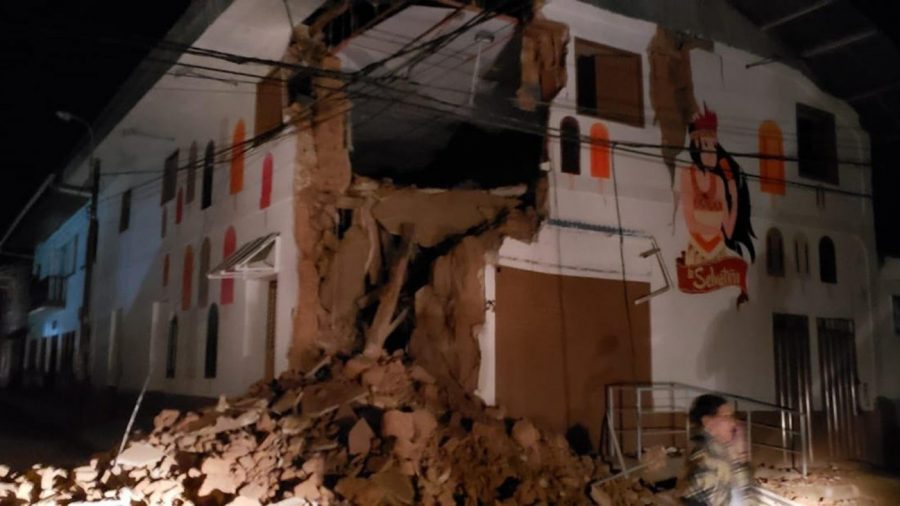A massive 8.0 magnitude earthquake has been reported in central Peru in the early hours of Sunday, May 26.
The quake struck at 2:41 a.m. local time at a depth of 115 kilometers (71 miles) in Pacaua Samiria National Reserve Park, just 80 kilometers (50 miles) north-west of Lagunas in Loreto, Peru, according to the United States Geological Survey.
Lagunas has a population of just over 9,000 people.
No tsunami warning has been issued and there have been no reports of injuries or fatalities at the time of publishing.

The deep-sea oarfish, said by the Japanese to be the omen of earthquakes and tsunamis, was recently found in fishing nets off the coast of Peru.
The Japanese word for this fish, “ryugu no tsukai,” means “messenger from the palace of the dragon king.” According to folklore, the fish rise from the depths to the surface and beach themselves when an earthquake is coming.
So when reports surfaced of an oarfish caught in fishing nets off the northern coast of Peru, it caused a stir locally, especially after it was posted to a popular Twitter account that reports on natural disasters.
Pez remo aparece en Perú causando temor de inminente terremoto entre Chile y Perú : https://t.co/wnoHByR0uA pic.twitter.com/8qtEzXA8cX
— ALERTA DE EMERGENCIA (@ALERTADESISMO) February 10, 2019
Many local media reports in February said that two oarfish were found in the town of Mancora, near the border with Equador. The species is not commonly seen in Peru.
The oarfish, which can reach over 30 feet in length, is thought to be behind some of the sea serpent myths of the west.
They had also been spotted before the the 2011 Fukushima earthquake in Japan.
Teeth to the Dragon King Myth?
Rachel Grant, a lecturer in animal biology at Anglia Ruskin University in Cambridge, said that although the link has not been confirmed by science, it is “theoretically possible” that oarfish deaths could be a signal of earthquakes to come.
“When an earthquake occurs there can be a build-up of pressure in the rocks which can lead to electrostatic charges that cause electrically-charged ions to be released into the water,” she told Euro News in 2017. “This can lead to the formation of hydrogen peroxide, which is a toxic compound. The charged ions can also oxidise organic matter which could either kill the fish or force them to leave the deep ocean and rise to the surface.”
“There is no scientific evidence at all for the theory that oarfish appear around big quakes,” Uozu Aquarium keeper Kazusa Saiba told CNN. “But we cannot 100 percent deny the possibility.”
Saiba said one possible explanation is subtle changes in the earth’s crust ahead of an earthquake “might cause the current to stir and push creatures at the bottom to the surface.”
Professor Shigeo Aramaki, a seismologist at the University of Tokyo, dismissed the fears of social media users as “nothing” according to the South China Morning Post.
“I’m not a specialist in fish, but there is no academic literature that has proven a scientific link to the behavior of animals and seismic activity,” he said. “I see absolutely no reason for concern and I have seen no updated reports of increased seismic activity in this country in recent weeks.”
Kiyoshi Wadatsumi, a specialist in ecological seismology, told Japan Times in 2010, “Deep-sea fish living near the sea bottom are more sensitive to the movements of active faults than those near the surface of the sea.”
With reporting by Epoch Times writer Simon Veazey.

